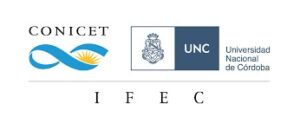Previous findings from our lab have demonstrated pharmacologically that the cannabinoid CB1 receptors (CB1Rs) within the nucleus accumbens core (NAcC) mediates restraint stress-induced reinstatement of extinguished cocaine-conditioned place preference (CPP), through modulation of the context-specific glutamate release after stress. Given that restoration of impaired accumbal glutamate homeostasis in cocaine-experienced rats prevented reinstatement, we proposed that the underlying mechanism to explain our previous observations could be related to the role of CB1R in modulating the basal extracellular glutamate levels. For this purpose, we employed the reverse microdialysis technique to locally and continuously perfuse increasing doses of ACEA, a highly selective CB1R agonist, and to collect extracellular glutamate within the NAcC of freely moving rats. Results showed that ACEA caused a reduction in the basal levels of extracellular glutamate in a dose-dependent manner. These in vivo findings are consistent with the canonical mechanism of action described for CB1R in accumbal slices and suggest that an initial reduction in basal levels of extracellular glutamate might result in lower inhibition of mgluR2/3, favoring the subsequent presynaptic glutamate release triggered by restraint stress in our model.

Menu
E-poster
Session: 10
PS10-08 | Activation of cannabinoid CB1 receptors in the nucleus accumbens core decreased basal extracellular glutamate after extinction of cocaine-conditioned place preference
Andrea Susana Guzmán
IFEC-CONICET, Departamento de Farmacología, Facultad de Ciencias Químicas, Universidad Nacional de Córdoba.
- Córdoba,
- Argentina
- Andrea Susana Guzmán1
- , María Paula Ávalos1
- , Marianela Adela Sánchez1
- , Bethania Mongi-Bragato1
- , Daiana Rigoni1
- , Julieta Boezio1
- , Flavia Andrea Bollati1
- , Liliana Marina Cancela1
- , Liliana Marina Cancela1
- 1. IFEC-CONICET; Departamento de Farmaoclogía, Facultad de Ciencias Químicas, Universidad Nacional de Córdoba
